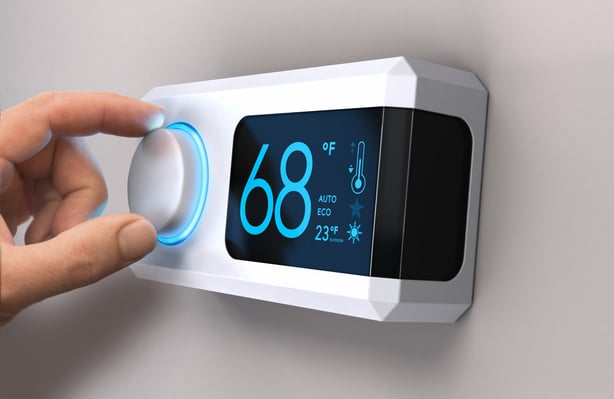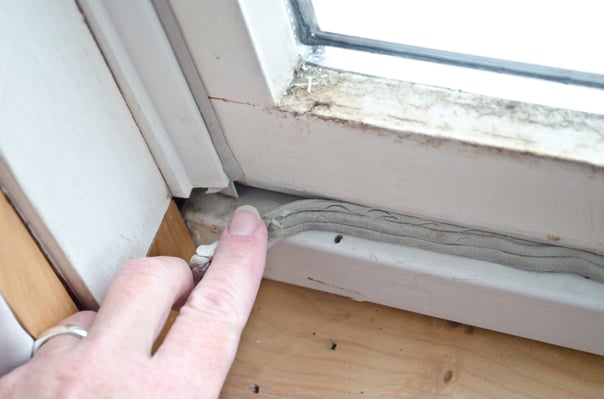Why Fall Is a Good Chance for Energy Efficiency Measures

The fall season provides an excellent opportunity for energy efficiency upgrades, since the weather is cool and pleasant. When the harsh winter weather arrives, your building can keep its interior warm at a lower energy cost.
Upgrades that prepare a building for cold weather can also be referred to as winterization projects. The following tips can help reduce your energy bills, while protecting your property against the winter weather.
Improve energy efficiency and save on power and gas.
Prepare Your Furnace
Hire a licensed HVAC professional to inspect your furnace and detect issues before the weather gets cold. This way you can avoid emergency reparations during winter, when there are fewer scheduling options and the prices are higher. Make sure the furnace filter is changed regularly as recommended by the manufacturer, since a furnace will only operate correctly with a clean filter.
Control the Thermostat Settings

HVAC systems account for a high percentage of your energy bills, but you can reduce consumption by setting back the thermostat. This means setting the thermostat lower during winter and higher during summer, but still within a comfortable range of temperatures.
The US Department of Energy suggests turning back the thermostat by 10°F to 15°F when the house is empty. When you are at home, use the lowest temperature that feels comfortable. These simple measures can save over 10% on heating costs. The following are some recommended temperatures:
- When the house is occupied during the day, set temperatures between 68° F to 72 ° F.
- When the house is empty during the day and while sleeping hours, set temperatures between 66° F to 62 ° F.
Those settings might seem cool but they are quite pleasant, especially when wearing winter outfits. Also consider using a smart thermostat, which learns usage habits on its own. This way, you avoid the tedious task of adjusting the thermostat several times per day.
Check Doors and Windows for Leaks and Drafts

Check for any gaps and air leaks in windows and doors: they cause heat loss during winter, forcing your heating system to work harder.
- To perform a simple airtightness test for a door, place a piece of paper in the door jamb and check if it slips easily once the door is closed.
- Also check for cracks and damaged seals around doors and windows.
To repair air leaks, purchase weatherstripping for doors and silicone caulk for windows. These products can be installed quickly and easily by following the provided instructions.
Use Ceiling Appliances Efficiently
With smart usage, ceiling fans and curtains can increase the overall efficiency of a home. Fans are normally used to cool interior spaces during summer, but they can also achieve synergy with space heaters if their spin direction is reversed.
- Consider that cold air gathers near the floor, while warm air gathers near the ceiling.
- A fan in reverse pulls the cold air upward, displacing the warm air towards the floor.
During winter days, curtains can remain open to take advantage of solar heat gain, allowing the accumulation of indoor heat. At night, curtains should be closed to keep the heat inside while you are sleeping.
Clean the Fireplace and Chimney, if Applicable
A fireplace is often considered a pleasant aesthetic feature, especially for residents of cold climates. A wood or gas fireplace should be cleaned regularly to prepare for fall and winter, making sure it functions efficiently and safely.
Before using the fireplace for the first time in the winter season, get a professional inspection and cleaning service. Adequate cleaning will ensure that any flammable material is removed, preventing the release of harmful carbon monoxide (CO) in your home.
Conclusion
Energy efficiency should be a goal for building owners throughout the year. However, fall represents an excellent chance to prepare for the winter and optimize heating costs.
One of the simplest tips is optimizing the thermostat, since this saves energy even without upgrading the heating system. Fall provides a great chance to experiment with different thermostat settings before winter arrives. You can also take your time to repair your heating system and find the best upgrades, instead of spending more than necessary with emergency reparations in winter.

Michael Tobias
Michael Tobias, the Founding Principal of NY Engineers, currently leads a team of 150+ MEP/FP engineers and has led over 4,000 projects in the US
Join 15,000+ Fellow Architects and Contractors
Get expert engineering tips straight to your inbox. Subscribe to the NY Engineers Blog below.

